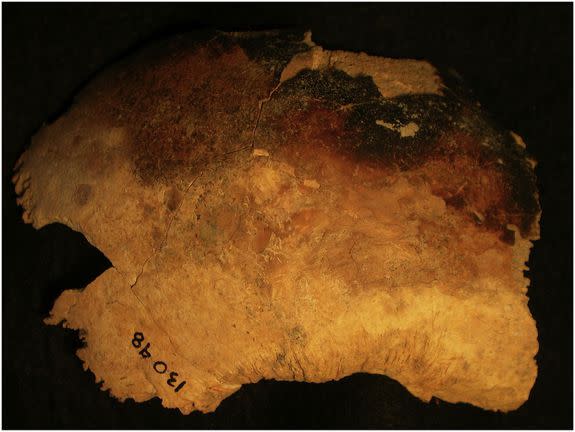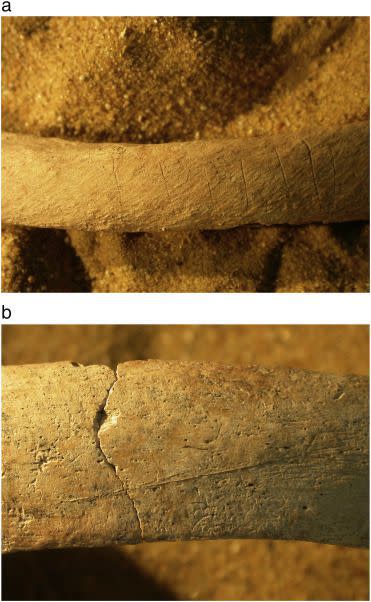Medieval villagers fought off zombies with this easy hack

Medieval times were hard. Between the bubonic plague, the Crusades, and serfdom, daily survival was a constant struggle. So this English village wasn't taking any chances on zombies.
Villagers may have burned, broken, and stabbed their deceased to keep corpses from springing back to life and roaming menacingly through the fields, a new study says.
SEE ALSO: 'The Walking Dead' Season 7 finale brings 'All Out War' but only one major death
A pit full of bones near the abandoned town of Wharram Percy suggest these bodies weren't simply buried and left to decompose. Sometime between the 11th and 13th centuries, villagers took a more proactive approach, a team of U.K. researchers wrote this week in the Journal of Archeological Science.
Belief in zombies — formally known as "revenant corpses" — was widespread in northern and western Europe in the Medieval period. It was thought that people who committed evil deeds in life took some of that ill-will with them to the grave. That malevolent force was powerful enough to "reanimate" the bodies for round two of being a jerk.

Image: mays et al. (2017)
To snuff out that evil spirit once and for all, villagers would burn the bodies, break their legs, chop off their heads, cut out the hearts, and employ other unpleasant methods, according to the study.
The pit included 137 separate bones from at least 10 individuals, who ranged in age from two to four years old to under 50 years old at death. Both genders were represented.
Researchers had a second gruesome explanation for all the disfigured bones: cannibalism, prompted by starvation.
Poor harvests led to at least a dozen major famines in England during this two-century stretch of time. Wharram Percy in particular has thin, nutrient-poor soil and a harsher climate, making it a difficult place to grow crops.

Image: mays et al. (2017)
Villagers may have dismembered their deceased, burned or roasted the flesh, and fractured the bones to extract marrow, the study said. Perhaps they made a tasty horrific broth?
Researchers acknowledged it's difficult to know what actually happened. They don't know when exactly the bones were deposited in the pit, which would provide a better cultural and historical context. And the amount of remains is substantially smaller than they'd expect from at least 10 individuals.
Still, beating back zombies and avoiding starvation seem like the most plausible scenarios, they said, proving once again that medieval times were no joke.
